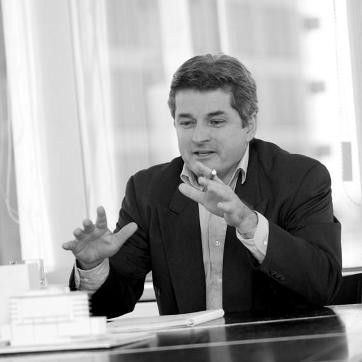The design industry in Queensland is booming, and according to Peter Gardiner from Peddle Thorp, it is being driven by several facets.
 Peter Gardiner, managing director at Peddle Thorp, talks to Architecture & Design about what is driving the boom, where the growth opportunities lie and what the future of Queensland’s design industry holds.
Peter Gardiner, managing director at Peddle Thorp, talks to Architecture & Design about what is driving the boom, where the growth opportunities lie and what the future of Queensland’s design industry holds.
Peddle Thorp has recently said Queensland is experiencing a design boom. What is driving this boom?
Queensland is currently leading the way in Australia in terms of design with architecture across the state having never been more visible or highly regarded. I think this is perhaps due to an increase in competition, which has made a huge difference in improving our state’s standard of design, with the Queensland government also playing a significant role in promoting our industry.
A greater level of respect is now also being awarded to deserving architects from local authorities that I think is refreshing and inspiring Queensland architects to think outside of the box and push boundaries.
Clearly population growth is also driving change in Queensland, but this growth can easily be strangled by poor or gutless planning, particularly instrumentalism in planning strangles growth. Big plans stimulate growth.
 (Above and below) Peddle Thorp’s QUT Kelvin Grove library refurbishment was recently completed in collaboration with James Cubitt Architects
(Above and below) Peddle Thorp’s QUT Kelvin Grove library refurbishment was recently completed in collaboration with James Cubitt Architects
What sectors of the industry are seeing the greatest growth?
The Urban Land Development Authority is currently helping to facilitate new development across Queensland, which is a real win for the state but growth as a whole is a relative term at the moment.
The local building industry has shrunk significantly since 2009-2010 and the tourism industry, particularly in my hometown of the Gold Coast, is still slow, with few developers and financiers willing to have a go. The 2018 Commonwealth Games may stimulate growth in this sector though, particularly along the light rail route.
The mining boom will also have an affect all along the coast as further development will be needed in the local communities near the mines to house an influx of workers. Short-term accommodation, rental accommodation, apartments, retail and public facilities will all be needed, which is good news for places like Cairns, Townsville Mackay and Rockhampton. Gladstone has a particular set of challenges coming from the Liquefied Natural Gas projects, but it is still also set to benefit from a growth in this sector.
I think retail generally will also grow across the state and that the commercial space will continue to grow in Brisbane on the back of the resources sector.

How is Queensland’s design industry differentiating itself from the rest of Australia?
Our buildings in Queensland show clearly whether they were designed by local architects and our work is often more subtle with greater texture, definition and shading. In looking at new apartment designs, the interior layout of some is really clever. The feeling of space and the outdoors can really add to high-rise living, and the climate here is ideal. The way we live is starting to be led by the spaces that we build and I think that this lifestyle option will be a feature of Queensland now.
What are the greatest challenges ahead of the design industry in Queensland?
I think all non-mining industries in Queensland, including architecture, are experiencing challenges from the high Australian dollar and the residual impacts of the global financial crises. The landscape is now highly competitive and fees may be driven down in order to obtain clients who have come back into the market more cautiously and are tentative with their money. It has now become more important than ever that we maintain a broad range of work, as specialising in individual sectors during this economic time would be a dangerous financial move.
Another interesting challenge I have noticed is the use of off-shore architects from Asia who are offering lower fees. However, they do not have a full understanding of our local planning codes or our lifestyle.
Project management has also grown as an industry, and whilst I see advantages in this for some projects, I believe there are some project managers doing the wrong parts of the project, particularly in lump-sum tender contracts. Architects are skilled administrators and project managers should use these skills to their advantage and work together as a team.
Client contact is also essential to the architectural process and will be limited if a project manager is appointed. I think that building is hard enough without having your hands tied. Having each professional around the table doing what they do best is essential.
What do you see as the future for design in Queensland?
When I first entered the industry in 1977, many architects in Queensland were predicting an end to the profession. I’m glad to say that this certainly hasn’t happened, but it is a very fluid profession so staying relevant is always going to be a challenge.
If we give away our areas of expertise and individual strengths then we will begin competing with each other on a very narrow base and run the risk of being absorbed into multi-disciplinary engineering groups as an overhead to the engineering process. By maintaining a dialogue with the government and the public, we are always educating the community on the value of better design.
Brisbane is a better place now than it was in 1988 when I left to live on the Gold Coast. Density, if it is managed, brings with it a more interesting and liveable urban fabric. It is easily reversed though by negative ‘not in my backyard’ thinking and we must not hinder the promise of what is to come by falling prey to this anti-development sentiment.

